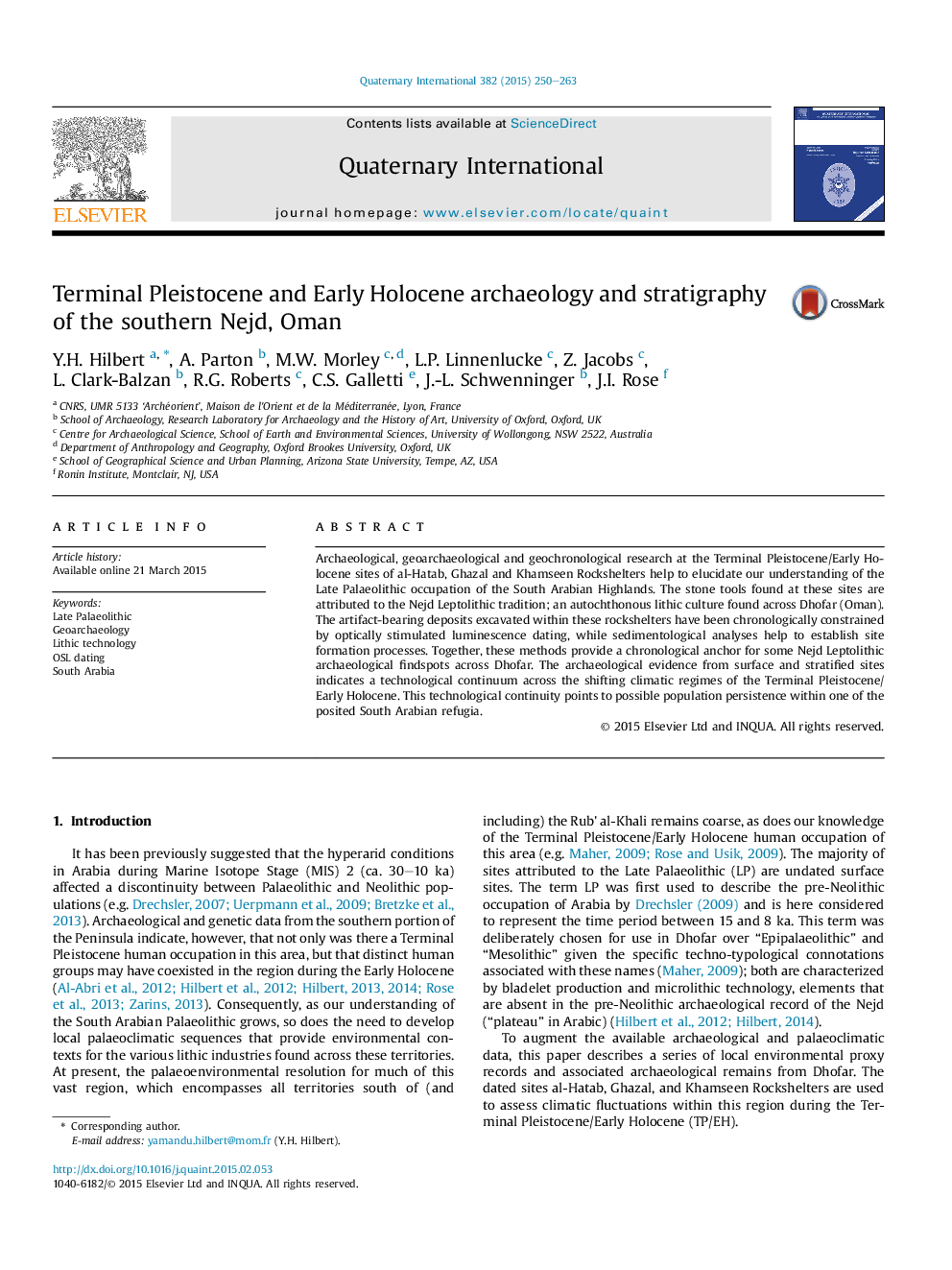| Article ID | Journal | Published Year | Pages | File Type |
|---|---|---|---|---|
| 1040636 | Quaternary International | 2015 | 14 Pages |
Archaeological, geoarchaeological and geochronological research at the Terminal Pleistocene/Early Holocene sites of al-Hatab, Ghazal and Khamseen Rockshelters help to elucidate our understanding of the Late Palaeolithic occupation of the South Arabian Highlands. The stone tools found at these sites are attributed to the Nejd Leptolithic tradition; an autochthonous lithic culture found across Dhofar (Oman). The artifact-bearing deposits excavated within these rockshelters have been chronologically constrained by optically stimulated luminescence dating, while sedimentological analyses help to establish site formation processes. Together, these methods provide a chronological anchor for some Nejd Leptolithic archaeological findspots across Dhofar. The archaeological evidence from surface and stratified sites indicates a technological continuum across the shifting climatic regimes of the Terminal Pleistocene/Early Holocene. This technological continuity points to possible population persistence within one of the posited South Arabian refugia.
